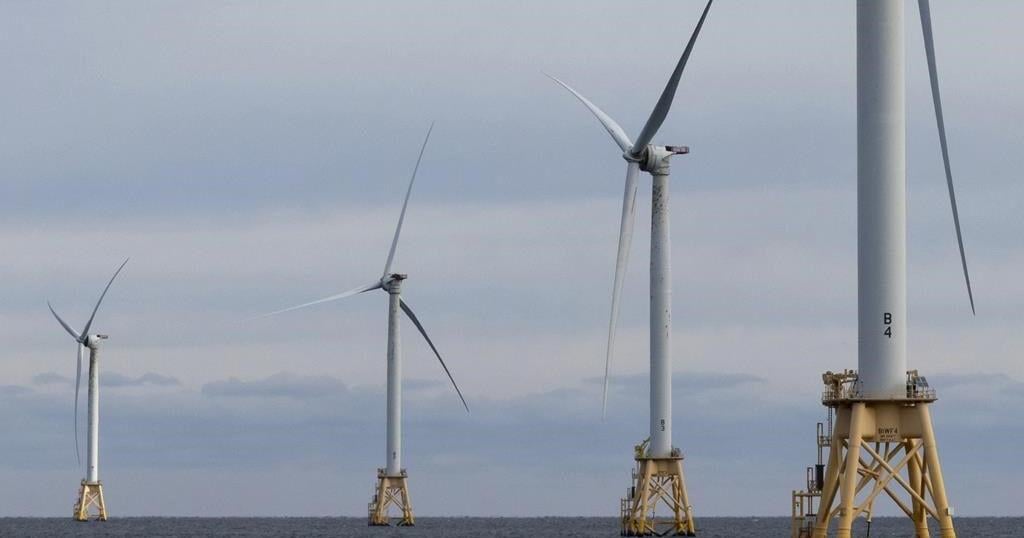What signals should market cryptologists be looking at? One measure is exports of semiconductors from South Korea, says Alicia Garcia-Herrero, chief economist for Asia at Natixis, an investment bank, who is based in Hong Kong. South Korea is pivotal to Asia’s supply chain, she says, and its shipments of semiconductors help predict exports in the region more generally. After a brutal 2019 the trend has bottomed out and is turning (see chart). Another signal is the financial health of big Asian chip companies, such as Samsung and SK Hynix. Those averse to digging deep into financial statements could simply monitor industry share prices. Or they could look for inflection points in the price of DRAM, a type of memory chip used to store data on servers and computers.
Economy
What the semiconductor industry tells us about the world economy – The Economist

THE SETTING for Robert Harris’s thriller, “Enigma”, is wartime Britain, where everything is rationed except for the rain. It follows Tom Jericho, a young prodigy stationed at Bletchley Park, the real-life centre of code-breaking operations, who is part of a team of cryptologists trying to break the code used by Germany’s armed forces. The work has frustration built in. Any progress can be undone if the enemy changes the code—which he will if he suspects that it has been cracked.
The novel comes to mind when considering the mysteries of shifts in the economic cycle and market reactions. The mood has clearly changed for the better since the middle of last year. Fears of recession have receded. Global equity prices have rallied. Bond yields have perked up. A truce in the trade war, however fragile, has helped. But the improvement in mood coincided with signs of life in Asia’s manufacturing hubs.
The key to these coded messages is the semiconductor industry. Cars, smartphones, gadgets and cloud-computing servers rely on components, notably memory chips, that are disproportionately made in emerging Asia. The mood-sensitive parts of aggregate demand—capital spending by firms and non-essential purchases by consumers—have microchips in there somewhere. The chip industry itself has savage mini-cycles. When it turns down, it is a sign of trouble ahead in the world economy. When it perks up, as it has done recently, there is reason to be more optimistic.
The cost structure of the chip business is central to this enigma. A semiconductor fabrication plant, or fab, costs billions of dollars to build. A sudden jump in orders, such as occurred in 2017, is met with increased capacity. But when demand falls, the fabs just keep producing. They are highly automated with few staff, so running costs are low. Continuous output makes sense but leads to occasional gluts and sagging prices, as happened through most of last year. Stocks become bloated. When demand picks up again, as it did late last year, stocks are drawn down and prices begin to stabilise.
Until quite recently the industry’s rhythms, and the tautness or slackness of Asia’s supply chains in general, were dictated by the two- or three-year life-cycle of smartphones. Export orders for Taiwanese electronics, for instance, tended to spike whenever a new Apple or Galaxy handset was launched. But the smartphone market is now saturated. Consumers find that an old model works almost as well as a newer one—and this might still be the case even when the new 5G generation of phones reaches the market. What drives growth in demand now is cloud computing, electrification of cars, wearable gadgetry and gaming, says Shawn Kim of Morgan Stanley. The cloud is a particular force. As firms ramp up capital spending of all kinds, that in turn spurs investment in cloud capacity, where business-related software lives.
Technology’s share of global GDP will continue to grow. In principle, then, these signals will become even more closely watched. But other forces are at work. China has designs to be self-sufficient in electronic components, a goal made more urgent by the trade-tech wars. The short-term effect is to give a boost to Asia’s tech industry. But in the longer term, firms might find themselves displaced by Chinese rivals, at least in China’s own market.
To the extent that China succeeds, it will devalue the signals that arrive from the more open parts of emerging Asia. Market-watchers will come to feel the same frustration felt by Mr Harris’s fictional codebreakers at Bletchley. The codes keep changing. For now, though, the message from Asia is that the sun is peeking through the clouds—or, at least, that it has stopped raining.
This article appeared in the Finance and economics section of the print edition under the headline “What the semiconductor industry tells us about the world economy”
Economy
B.C.’s debt and deficit forecast to rise as the provincial election nears

VICTORIA – British Columbia is forecasting a record budget deficit and a rising debt of almost $129 billion less than two weeks before the start of a provincial election campaign where economic stability and future progress are expected to be major issues.
Finance Minister Katrine Conroy, who has announced her retirement and will not seek re-election in the Oct. 19 vote, said Tuesday her final budget update as minister predicts a deficit of $8.9 billion, up $1.1 billion from a forecast she made earlier this year.
Conroy said she acknowledges “challenges” facing B.C., including three consecutive deficit budgets, but expected improved economic growth where the province will start to “turn a corner.”
The $8.9 billion deficit forecast for 2024-2025 is followed by annual deficit projections of $6.7 billion and $6.1 billion in 2026-2027, Conroy said at a news conference outlining the government’s first quarterly financial update.
Conroy said lower corporate income tax and natural resource revenues and the increased cost of fighting wildfires have had some of the largest impacts on the budget.
“I want to acknowledge the economic uncertainties,” she said. “While global inflation is showing signs of easing and we’ve seen cuts to the Bank of Canada interest rates, we know that the challenges are not over.”
Conroy said wildfire response costs are expected to total $886 million this year, more than $650 million higher than originally forecast.
Corporate income tax revenue is forecast to be $638 million lower as a result of federal government updates and natural resource revenues are down $299 million due to lower prices for natural gas, lumber and electricity, she said.
Debt-servicing costs are also forecast to be $344 million higher due to the larger debt balance, the current interest rate and accelerated borrowing to ensure services and capital projects are maintained through the province’s election period, said Conroy.
B.C.’s economic growth is expected to strengthen over the next three years, but the timing of a return to a balanced budget will fall to another minister, said Conroy, who was addressing what likely would be her last news conference as Minister of Finance.
The election is expected to be called on Sept. 21, with the vote set for Oct. 19.
“While we are a strong province, people are facing challenges,” she said. “We have never shied away from taking those challenges head on, because we want to keep British Columbians secure and help them build good lives now and for the long term. With the investments we’re making and the actions we’re taking to support people and build a stronger economy, we’ve started to turn a corner.”
Premier David Eby said before the fiscal forecast was released Tuesday that the New Democrat government remains committed to providing services and supports for people in British Columbia and cuts are not on his agenda.
Eby said people have been hurt by high interest costs and the province is facing budget pressures connected to low resource prices, high wildfire costs and struggling global economies.
The premier said that now is not the time to reduce supports and services for people.
Last month’s year-end report for the 2023-2024 budget saw the province post a budget deficit of $5.035 billion, down from the previous forecast of $5.9 billion.
Eby said he expects government financial priorities to become a major issue during the upcoming election, with the NDP pledging to continue to fund services and the B.C. Conservatives looking to make cuts.
This report by The Canadian Press was first published Sept. 10, 2024.
Note to readers: This is a corrected story. A previous version said the debt would be going up to more than $129 billion. In fact, it will be almost $129 billion.
The Canadian Press. All rights reserved.
Economy
Mark Carney mum on carbon-tax advice, future in politics at Liberal retreat

NANAIMO, B.C. – Former Bank of Canada governor Mark Carney says he’ll be advising the Liberal party to flip some the challenges posed by an increasingly divided and dangerous world into an economic opportunity for Canada.
But he won’t say what his specific advice will be on economic issues that are politically divisive in Canada, like the carbon tax.
He presented his vision for the Liberals’ economic policy at the party’s caucus retreat in Nanaimo, B.C. today, after he agreed to help the party prepare for the next election as chair of a Liberal task force on economic growth.
Carney has been touted as a possible leadership contender to replace Justin Trudeau, who has said he has tried to coax Carney into politics for years.
Carney says if the prime minister asks him to do something he will do it to the best of his ability, but won’t elaborate on whether the new adviser role could lead to him adding his name to a ballot in the next election.
Finance Minister Chrystia Freeland says she has been taking advice from Carney for years, and that his new position won’t infringe on her role.
This report by The Canadian Press was first published Sept. 10, 2024.
The Canadian Press. All rights reserved.
Economy
Nova Scotia bill would kick-start offshore wind industry without approval from Ottawa

HALIFAX – The Nova Scotia government has introduced a bill that would kick-start the province’s offshore wind industry without federal approval.
Natural Resources Minister Tory Rushton says amendments within a new omnibus bill introduced today will help ensure Nova Scotia meets its goal of launching a first call for offshore wind bids next year.
The province wants to offer project licences by 2030 to develop a total of five gigawatts of power from offshore wind.
Rushton says normally the province would wait for the federal government to adopt legislation establishing a wind industry off Canada’s East Coast, but that process has been “progressing slowly.”
Federal legislation that would enable the development of offshore wind farms in Nova Scotia and Newfoundland and Labrador has passed through the first and second reading in the Senate, and is currently under consideration in committee.
Rushton says the Nova Scotia bill mirrors the federal legislation and would prevent the province’s offshore wind industry from being held up in Ottawa.
This report by The Canadian Press was first published Sept. 10, 2024.
The Canadian Press. All rights reserved.
-

 News14 hours ago
News14 hours agoB.C. to scrap consumer carbon tax if federal government drops legal requirement: Eby
-

 Sports15 hours ago
Sports15 hours agoLawyer says Chinese doping case handled ‘reasonably’ but calls WADA’s lack of action “curious”
-

 News14 hours ago
News14 hours agoA linebacker at West Virginia State is fatally shot on the eve of a game against his old school
-

 Sports9 hours ago
Sports9 hours agoCanada’s Marina Stakusic advances to quarterfinals at Guadalajara Open
-

 News14 hours ago
News14 hours agoHall of Famer Joe Schmidt, who helped Detroit Lions win 2 NFL titles, dies at 92
-

 News15 hours ago
News15 hours agoRCMP say 3 dead, suspects at large in targeted attack at home in Lloydminster, Sask.
-
News24 hours ago
Local Toronto business story – Events Industry : new national brand, Element Event Solutions
-

 News15 hours ago
News15 hours agoProvinces decry Ottawa’s plan to resettle asylum seekers across the country




















